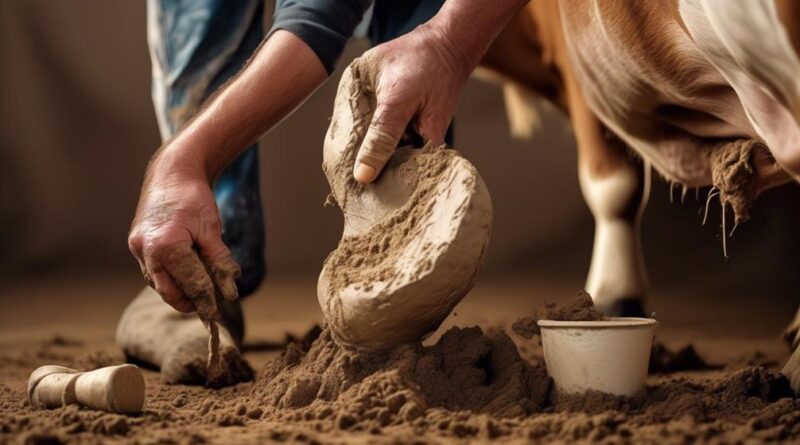What Are Natural Remedies for Cattle Hoof Problems?
Just like a sturdy foundation is crucial for a building, healthy hooves are essential for the well-being of your cattle.
When it comes to natural remedies for cattle hoof problems, there are several approaches you can take to ensure the overall health and strength of your livestock's hooves.
From understanding the anatomy of cattle hooves to implementing proper nutrition and regular hoof care, there are various natural remedies that can help address and prevent common hoof issues.
But how exactly can these remedies be implemented, and what specific natural treatments can be used to promote hoof health?
Understanding Cattle Hoof Anatomy
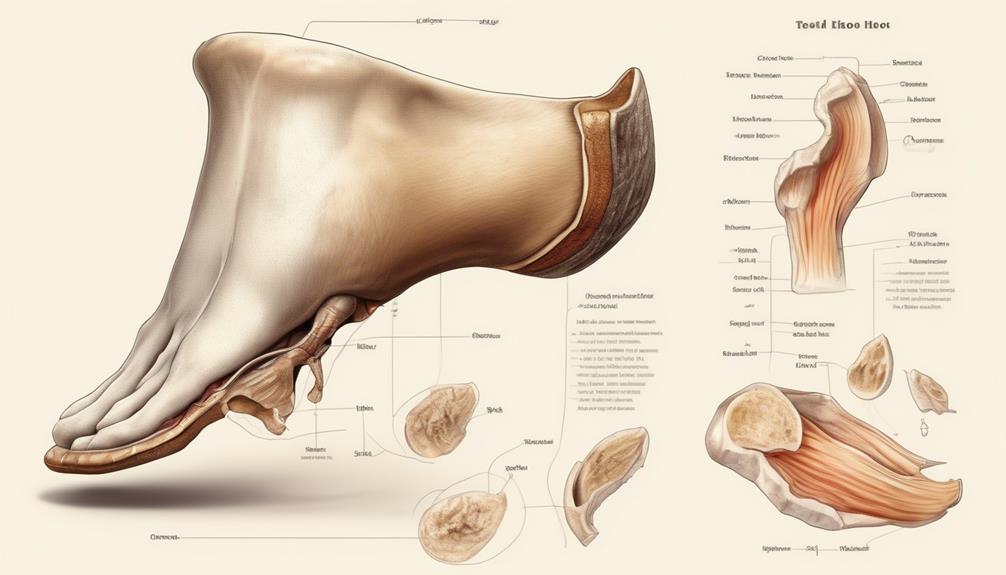
To understand cattle hoof anatomy, it's important to recognize the intricate structure that supports the weight and movement of these animals. The cattle hoof structure is a marvel of engineering, designed to provide support, traction, and protection. The hoof consists of the outer hoof wall, the sole, and the two-thirds of the way up the hoof, the coronary band. The inner structures include the coffin bone, the navicular bone, and the digital cushion. Understanding these components is essential for maintaining hoof health.
Cattle hoof health maintenance is crucial for the overall well-being of the animal. Regular trimming and balancing of the hoof are essential to prevent lameness and discomfort. Trimming the hoof helps maintain the proper shape and length, ensuring even weight distribution and minimizing the risk of injuries.
Additionally, providing clean and dry living conditions can help prevent bacterial and fungal hoof infections, which can lead to serious health issues if left untreated. Incorporating these practices into your cattle management routine can significantly contribute to hoof health. Regularly inspect the hooves for any signs of damage or infection, and promptly address any issues that arise.
Identifying Common Hoof Problems
Common hoof problems in cattle can significantly impact their mobility and overall well-being. Identifying these issues early is crucial for effective treatment and prevention techniques. Here are some common hoof problems to watch out for:
- Foot Rot: This bacterial infection typically occurs in the interdigital space and can cause severe lameness. Early detection involves observing for signs of swelling, redness, and foul odor in the affected area. Implementing proper hygiene and keeping the barn clean can help prevent foot rot.
- Digital Dermatitis: Also known as hairy heel warts, this condition affects the skin on the back of the heel and can lead to painful lesions and lameness. Regular hoof inspections and maintaining clean and dry living conditions can aid in early detection and prevention.
- Sole Ulcers: These are caused by excessive pressure on the hoof, leading to tissue damage and lameness. Look out for hoof tenderness, lameness, and uneven weight distribution. Providing comfortable resting areas and ensuring proper hoof trimming can help prevent sole ulcers.
- White Line Disease: This fungal or bacterial infection affects the inner layer of the hoof wall, potentially causing structural damage and lameness. Regular hoof cleaning and inspections are key to early detection, and maintaining proper nutrition can aid in prevention.
Importance of Proper Nutrition
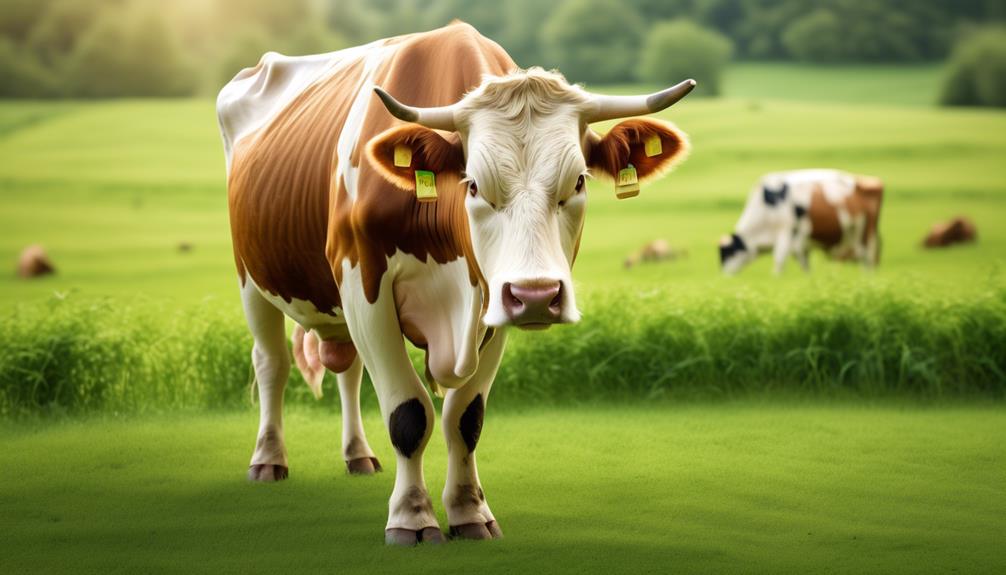
Maintaining a balanced diet is essential for ensuring the overall health and resilience of your cattle's hooves. Proper nutrition plays a crucial role in preventing hoof problems and maintaining strong, healthy hooves. Dietary supplements can be an effective way to address any nutrient deficiencies that may be affecting your cattle's hooves.
When it comes to hoof health, certain nutrients are particularly important. For instance, biotin, a B vitamin, is known for its role in promoting hoof integrity. If your cattle aren't receiving adequate biotin from their regular diet, supplementing with biotin can help support hoof health. Additionally, minerals such as zinc and copper are essential for hoof strength and growth. Ensuring that your cattle's diet includes these vital nutrients can help prevent hoof issues related to nutrient deficiencies.
Incorporating dietary supplements into your cattle's feeding regimen can be an effective strategy for addressing specific nutrient deficiencies that may impact hoof health. However, it's important to consult with a veterinarian or animal nutritionist to determine the appropriate supplements and dosage for your cattle. This personalized approach can help address any specific nutritional needs and ensure that the supplements are effectively supporting hoof health without causing any imbalances.
Implementing Regular Hoof Trimming
Regular hoof trimming is essential for maintaining the overall health and well-being of your cattle. By keeping their hooves properly trimmed, you can ensure that they're free from discomfort and hoof-related issues.
Here are some important points to consider when implementing regular hoof trimming:
- Hoof Health: Regular trimming helps maintain the proper hoof structure and prevents issues such as overgrowth, cracks, and infections. It also promotes good blood circulation within the hooves, contributing to overall hoof health.
- Preventative Care: Trimming your cattle's hooves on a regular schedule helps prevent more serious problems from developing. It allows you to detect any abnormalities or signs of disease early on, enabling timely intervention and treatment.
- Expert Consultation: It's advisable to consult with a professional hoof trimmer or a veterinarian to determine the appropriate frequency and technique for trimming your cattle's hooves. They can also provide guidance on identifying signs of hoof problems and how to address them effectively.
- Proper Equipment: Ensure that you have the necessary tools and equipment for hoof trimming. This includes hoof shears, a hoof knife, and a sturdy hoof trimming chute to safely restrain the cattle during the process.
Utilizing Natural Topical Treatments
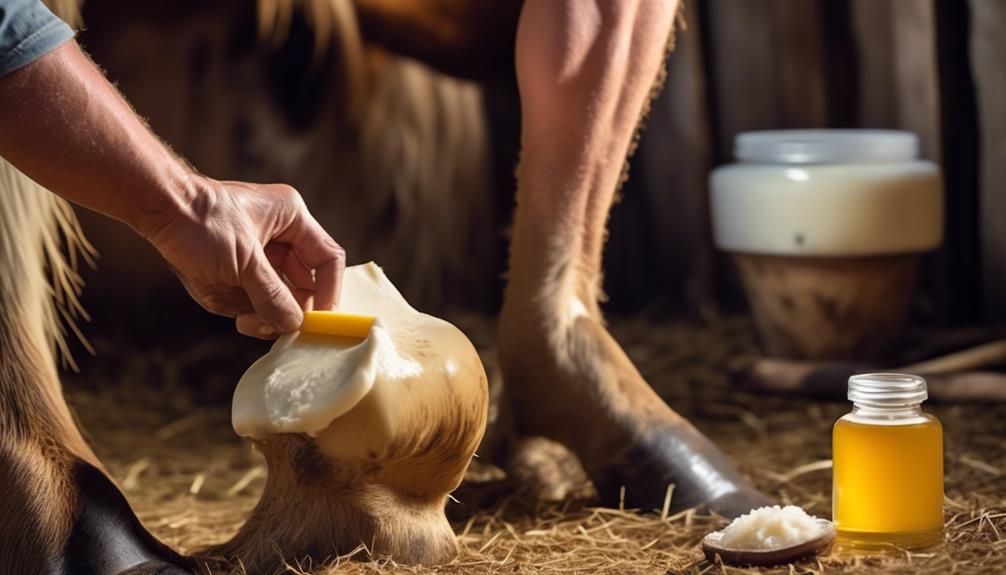
After establishing the importance of regular hoof trimming for your cattle's health, it's essential to consider the use of natural topical treatments to address any existing hoof problems and promote overall hoof well-being.
Herbal poultices are a great natural remedy for cattle hoof problems. They can help reduce inflammation, alleviate pain, and promote healing. To make a herbal poultice, you can mix dried herbs such as comfrey, calendula, and lavender with hot water to form a paste. Apply this paste directly to the affected hoof and wrap it with a bandage. This can be especially effective for treating abscesses and bruises.
Another natural topical treatment to consider is essential oil treatments. Essential oils like tea tree oil and oregano oil have antimicrobial and antifungal properties, making them great for treating hoof infections such as thrush. Mix a few drops of the essential oil with a carrier oil like coconut oil, and apply it to the affected area. Essential oils can also help improve hoof health by moisturizing and conditioning the hooves.
When using natural topical treatments, it's important to monitor your cattle for any adverse reactions and consult with a veterinarian if you have any concerns. These remedies can be a valuable and effective addition to your cattle care routine, promoting hoof health and overall well-being in a natural and sustainable way.
Providing Adequate Hoof Protection
To ensure optimal hoof health for your cattle, consider providing adequate protection for their hooves in challenging terrains and weather conditions. Hoof protection is crucial for preventing injuries, promoting healthy hoof growth, and maintaining overall cattle well-being. Here are some practical hoof care techniques to help you provide the necessary protection for your cattle's hooves:
- Regular Trimming: Schedule routine hoof trimming to prevent overgrowth and maintain the proper shape of the hooves. This practice helps in preventing cracks and overexposure to harmful elements.
- Application of Hoof Hardeners: In challenging terrains, consider using hoof hardeners to strengthen the hooves and provide an additional layer of protection. Hoof hardeners can help minimize the risk of damage from rocks, rough surfaces, and excessive moisture.
- Use of Protective Boots: When cattle are exposed to harsh terrains or weather conditions, consider using protective boots designed specifically for cattle hooves. These boots offer an extra layer of defense against abrasive surfaces and potential injuries.
- Providing Dry Bedding: Ensure that the areas where your cattle rest are dry and free from moisture. Wet and muddy conditions can soften the hooves, making them more susceptible to injuries and infections. By providing dry bedding, you can help maintain the natural strength and integrity of the hooves.
Maintaining Clean and Dry Living Conditions
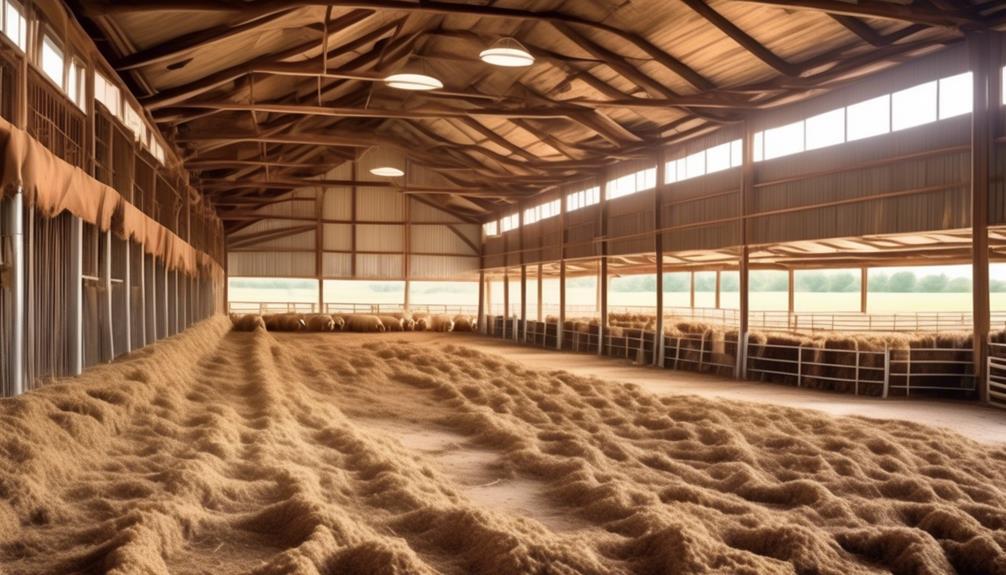
Consider maintaining clean and dry living conditions for your cattle to further protect their hooves and overall well-being. Preventing infections and promoting healing are essential aspects of hoof care that can be significantly influenced by the environment in which your cattle live.
Wet and dirty living conditions can increase the risk of hoof problems such as thrush and other infections. To prevent such issues, ensure that your cattle have access to clean and dry areas where they can rest and move comfortably.
Start by regularly cleaning the cattle living areas to remove manure, mud, and excess moisture. This can be achieved by using proper drainage systems, regularly removing manure buildup, and providing clean bedding. Additionally, consider providing shelter to protect your cattle from excessive moisture, especially during periods of heavy rainfall or snow. Adequate ventilation in the shelter is also important to prevent the buildup of moisture and ammonia, which can contribute to hoof issues.
In addition to cleanliness, it's crucial to maintain dry living conditions. This can be achieved by ensuring proper drainage in the cattle living areas and avoiding overcrowding, which can lead to excessive moisture buildup. Regularly monitor the living conditions to identify and address any areas that are prone to becoming wet and muddy.
Seeking Professional Veterinary Care
When facing cattle hoof problems, promptly seek professional veterinary care to ensure proper diagnosis and treatment for your animals' well-being. Cattle hoof issues can significantly impact the overall health and productivity of your herd, so it's crucial to prioritize their hoof care. Here's why seeking professional veterinary care is essential:
- Preventive Measures: Veterinary professionals can provide valuable guidance on preventive measures to maintain hoof health. They can advise on proper nutrition, hygiene practices, and environmental management to minimize the risk of hoof problems.
- Early Intervention: Timely intervention is vital when it comes to addressing cattle hoof problems. Veterinarians are trained to identify early signs of hoof issues and can initiate prompt treatment to prevent the condition from worsening.
- Regular Check-ups: Scheduling regular hoof check-ups with a veterinary specialist is crucial for monitoring the overall hoof health of your cattle. These check-ups allow for early detection of any developing issues and enable timely intervention.
- Professional Guidance: Veterinary expertise is invaluable in addressing complex hoof problems. By seeking professional veterinary care, you can benefit from specialized knowledge and access to appropriate treatments to ensure the best possible outcomes for your cattle.
Frequently Asked Questions
Can Cattle Hoof Problems Be a Sign of a More Serious Health Issue?
Cattle hoof problems can indicate a more serious health issue. Pay attention to hoof nutrition and regular hoof trimming to prevent and address potential underlying health concerns. Keep a close eye on your cattle's hoof health.
Are There Any Natural Remedies That Can Help Prevent Cattle Hoof Problems in the First Place?
To prevent cattle hoof problems naturally, you can incorporate herbal supplements into their diet. These can help strengthen hooves and support overall hoof health. Regular trimming and maintaining clean, dry living conditions also play a crucial role in preventing issues.
How Can I Tell if My Cattle Are in Pain From Hoof Problems?
If your cattle are in pain from hoof problems, look for behavioral changes like limping or reluctance to stand. Regular hoof trimming and maintenance practices can help prevent and detect issues early, ensuring your cattle's comfort.
Are There Any Natural Remedies That Can Help Promote Faster Healing of Hoof Problems?
You can promote faster healing of cattle hoof problems by using herbal treatments and dietary supplements. These natural remedies can aid in the recovery process and contribute to overall hoof health for your cattle.
What Are Some Signs That Indicate It's Time to Seek Professional Veterinary Care for Cattle Hoof Problems?
If you notice limping, overgrown hooves, or abnormal wear, it's time for professional veterinary care. Regular hoof trimming and dietary supplements can help prevent issues. Keep an eye out for any signs of discomfort or difficulty walking.
Conclusion
In conclusion, taking care of your cattle's hoof health is essential for their overall well-being. By understanding their hoof anatomy, identifying common problems, and implementing natural remedies such as proper nutrition, regular trimming, and topical treatments, you can help prevent and treat hoof issues.
Additionally, providing adequate protection and maintaining clean living conditions can further support their hoof health. And don't forget to seek professional veterinary care when needed for the best results.
